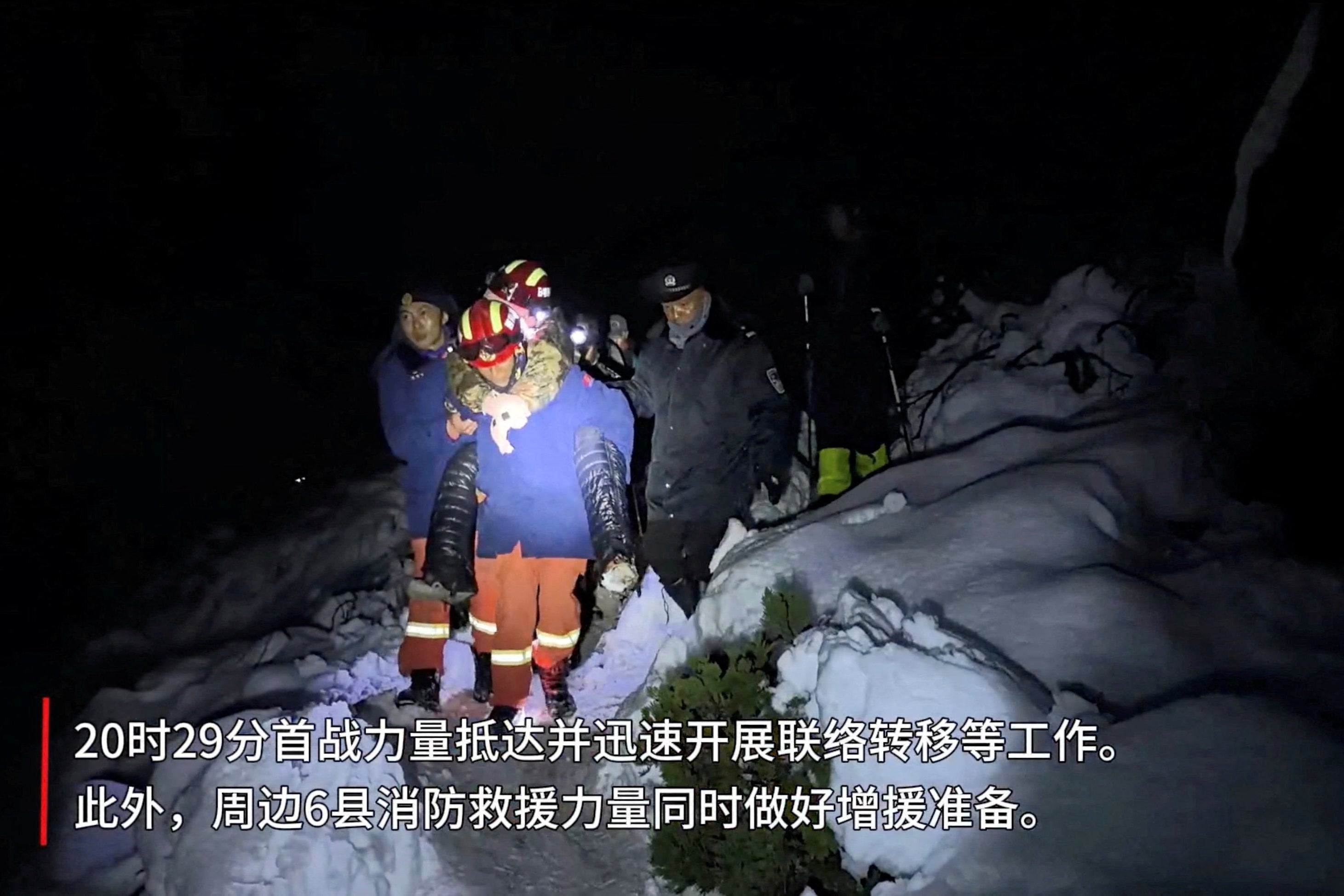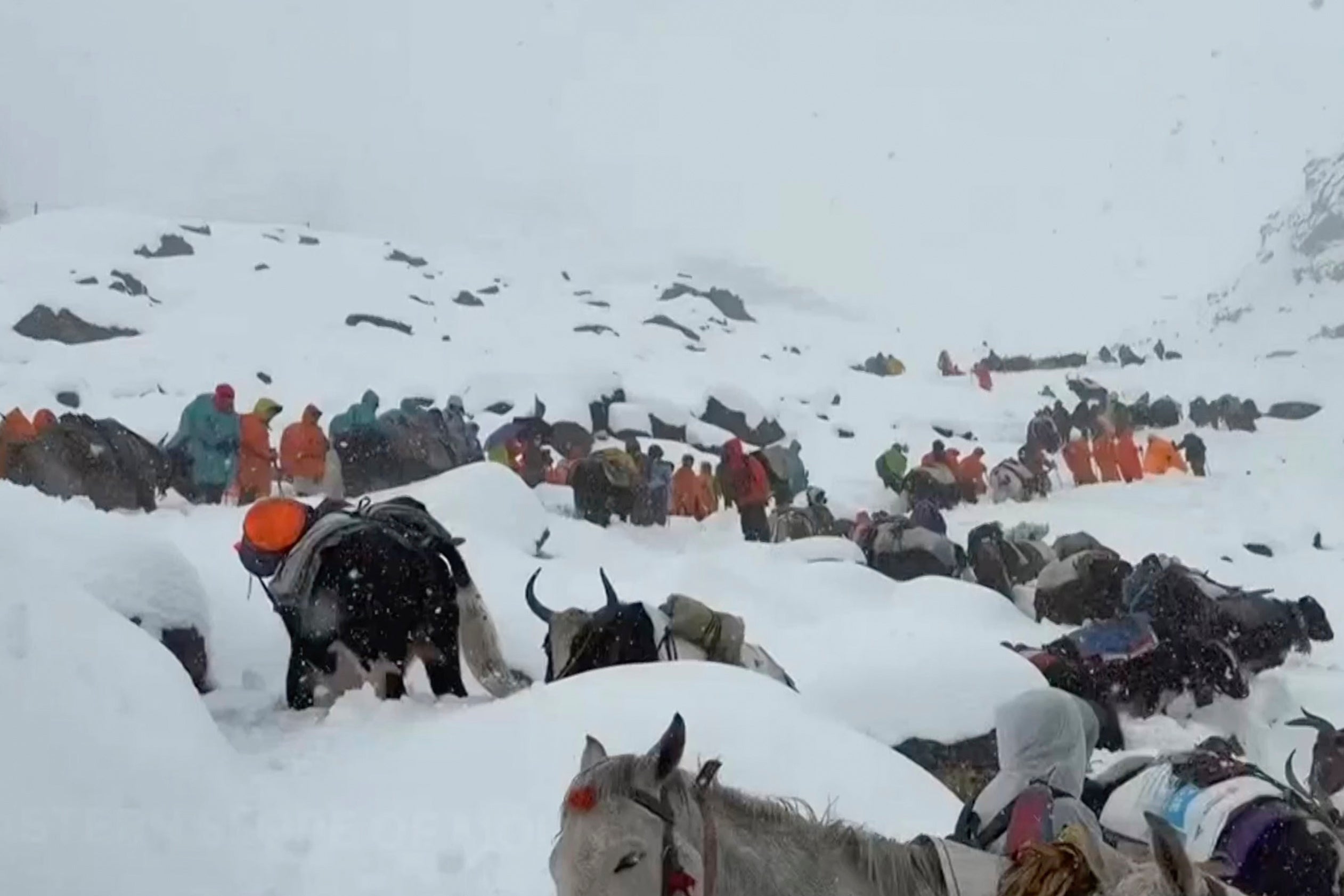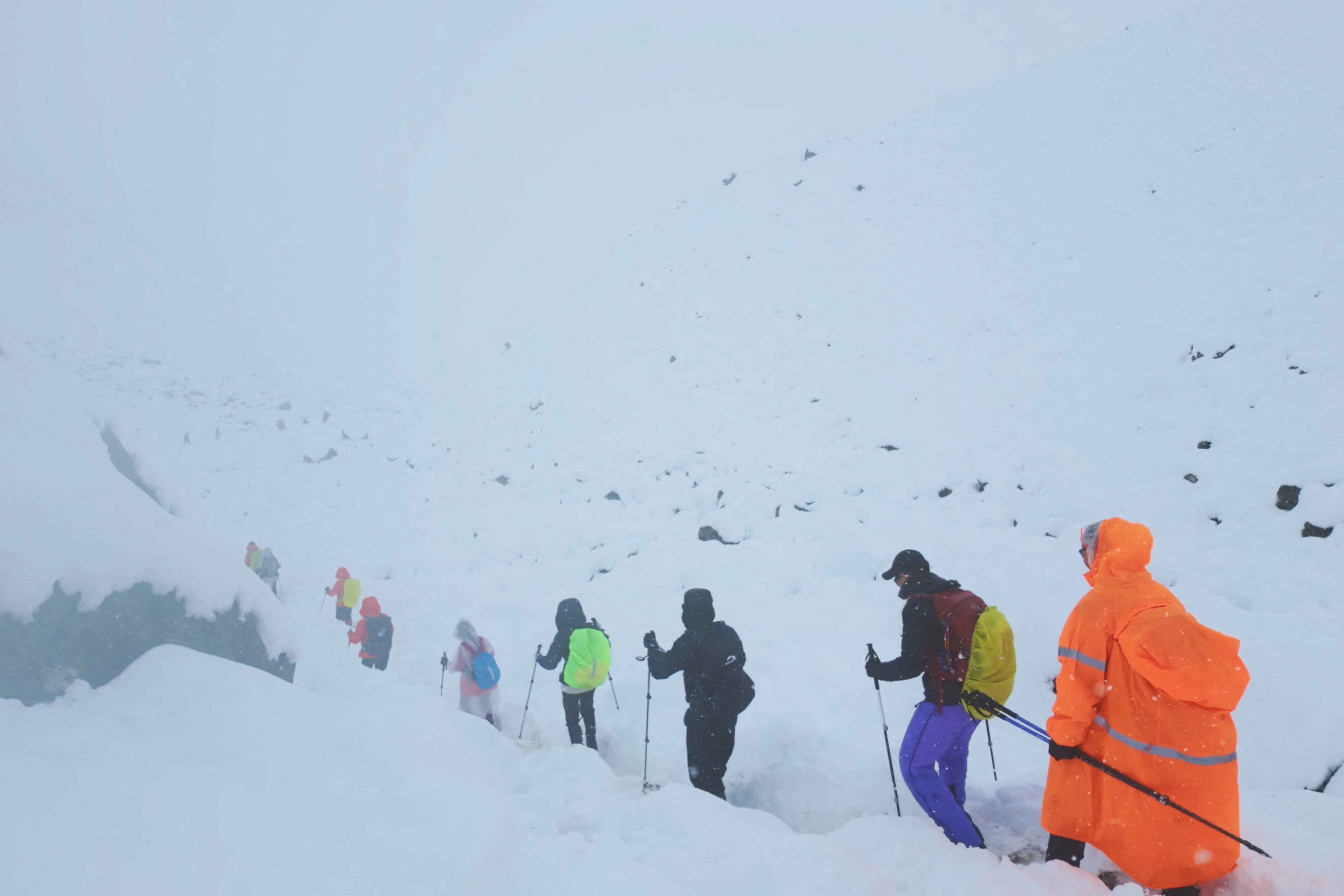At least one hiker died as rescuers raced against time to evacuate more than 200 others stranded at Mount Everest’s eastern face after being trapped by a heavy snowstorm during China's most popular holiday weekend.
Some 350 others have been rescued and escorted to the small town of Qudang, located about 48km from the base camp on Everest’s Tibetan side, the Chinese authorities who control the Tibetan Autonomous Region said.
Hundreds of hikers were trapped at an elevation of more than 4,900m after the region was hit by heavy snowfall on Friday and Saturday. Mount Everest stands about 8,850m tall.
More than 200 remaining trekkers are being evacuated, a source familiar with the situation told Reuters on Tuesday. The evacuation began on Monday and should be completed by Tuesday, said the source, who asked to remain unidentified.
Rescuers, including Chinese officials and villagers, have been battling deep snow and limited visibility to save the stranded trekkers. A video shot by a villager showed a long line of people with horses and oxen moving up a winding path in the snow.
A young hiker, nicknamed FeiFei, said she was on a multi-day trek with three friends and a local guide in the Karma Valley when heavy snow buried their camp on Saturday night. “We had to constantly clear the snow from the tents, but I collapsed from exhaustion and my tent got buried,” she told AFP news agency after being brought to safety on Monday.

She added that after two days of walking, during which “firefighters cleared the path using yaks and horses to clear the snow”, the group returned to the rescue centre. On her way down, FeiFei saw dozens of hikers along the way, weakened by hunger or altitude.
However, she noted that none appeared to be in critical condition.
A 46-year-old South Korean national died while ascending Mera Peak in the eastern side of Nepal, about 31km south of Mount Everest, according to reports.
The trekker’s body was retrieved by a rescue helicopter, while the sherpa, who was climbing with the Korean national, was rescued from an elevation of 5,800m, said Tul Singh Gurung, president of the Nepal National Mountain Guides Association.
“The climber likely died after being exposed to extreme cold for an extended period,” Mr Gurung was quoted by The Chosun Daily as saying.
Other trekkers described suffering from hypothermia after being buried in the dense snow. Hiker Eric Wen told Reuters that three people in his group got hypothermia even with sufficient attire.

He said the group had to clear the snow every 10 minutes at night, “otherwise our tents would have collapsed”.
Chen Geshuang, who was part of an 18-strong team that was evacuated safely, said: “It happened all too suddenly.”
“All of us are experienced hikers,” Ms Chen, 29, told BBC News. “But this blizzard was still extremely difficult to deal with. I was so lucky to get out.”
“Many people come here to hike during the Golden Week, but this year’s snow was exceptional,” she said. Their guide also said such weather on the eastern slope of Everest was highly unusual, she added.
In the Qilian Mountains on the border straddling western Qinghai and Gansu provinces, at least one trekker who was stranded in a gully by the snowstorms died, while 137 others were evacuated, state-run Beijing News reported.

Trekkers to the Karma valley that leads to the eastern face of Everest, Kangshung, swelled to the hundreds in recent days, spurred by the eight-day National Day holiday in China.
The Karma valley, first explored by Western travellers a century ago, is a relatively pristine part of the Everest region. Unlike the peak’s arid north face, it boasts lush vegetation and untouched alpine forests, fed by meltwaters from the Kangshung glacier at the foot of the world’s highest mountain.
Mount Everest, known as Mount Qomolangma in Chinese, straddles the border between China and Nepal, where recent heavy rains have left more than 40 people dead.
Climbers attempt to scale the world’s tallest peak from base camps in both countries. The base camp for climbers is separate from the tourist camp where hikers were trapped by the snowfall.
Chinese premier to make highest-level visit in years for North Korea military parade
Trump deserves Nobel Peace Prize if stops China’s invasion, says Taiwan president
Mount Everest rescue: Race against time to rescue 200 hikers stuck in blizzard
Hundreds rescued after snowstorm traps nearly 1,000 trekkers on Mount Everest
Range Rover stolen in UK turns up three years later in Pakistan
Villages swept away and dozens killed as heavy rains cause flooding in Nepal







